Types of EJ20 Engines
The Subaru EJ20 engine is a 2.0-liter, four-cylinder flat engine (also known as a boxer engine) that was first introduced in 1989. The EJ20 engine is a key component of Subaru's renowned all-wheel-drive system, providing superior control on challenging road conditions. Over its production span from 1989 to 2019, the EJ20 evolved through several distinct variants, each with unique characteristics and performance profiles.
Single Overhead Cam (SOHC)
The basic variant of the EJ20 lineup features a simpler design with fewer moving parts.
- Lower manufacturing cost
- Easier maintenance requirements
- Used primarily in entry-level Subaru models
- Power output: 100-120 hp
- Ideal for daily drivers seeking reliability
Best for: Economy-focused driving, reliable daily transportation
Dual Overhead Cam (DOHC)
A more sophisticated design with two camshafts per cylinder bank for improved performance.
- Better airflow management
- More precise valve timing
- Enhanced fuel efficiency
- Improved power output: 130-150 hp
- Found in mid-range to premium Subaru models
Best for: Balance of performance and efficiency
Turbocharged EJ20
Performance-oriented variants with forced induction for significant power increases.
- Substantial horsepower boost: 150-280 hp
- Increased torque throughout the rev range
- Used in performance models like WRX and STI
- Available in various boost configurations
- Requires premium fuel for optimal performance
Best for: Performance enthusiasts, sporty driving experience
Supercharged EJ20
Specialized variants with mechanical forced induction for immediate power delivery.
- Immediate throttle response without turbo lag
- Consistent power delivery across the rev range
- More linear power curve than turbocharged versions
- Rarer in production models
- Often found in specialized or limited editions
Best for: Demanding driving conditions requiring instant response
Expert Insight: The EJ20 engine platform's longevity in Subaru's lineup (1989-2019) speaks to its robust design and adaptability. The boxer configuration provides a lower center of gravity than conventional inline engines, contributing to Subaru's characteristic handling dynamics.
| EJ20 Variant | Power Output | Common Applications | Key Characteristics |
|---|---|---|---|
| SOHC Naturally Aspirated | 100-120 hp | Impreza, Legacy (base models) | Reliability, economy, simplicity |
| DOHC Naturally Aspirated | 130-150 hp | Impreza, Legacy, Forester | Balance of efficiency and performance |
| DOHC Turbocharged | 150-280 hp | WRX, STI, Forester XT | High performance, rally heritage |
| Specialized Variants | Variable | Limited editions, JDM models | Specific performance profiles for niche applications |
Specifications and Technical Details
The Subaru EJ20 engine incorporates sophisticated engineering in a compact flat-four configuration. Understanding its technical specifications is essential for proper maintenance, tuning, and performance expectations.
| Specification | Details |
|---|---|
| Engine Type | 2.0-liter horizontally opposed (flat) four-cylinder, four-stroke cycle engine with DOHC configuration (two camshafts per cylinder bank) |
| Displacement | 1,994 cc (2.0 liters) |
| Bore × Stroke | 92.0 mm × 75.0 mm |
| Compression Ratio | 8.0:1 (turbocharged), 10.0:1-10.7:1 (naturally aspirated) |
| Fuel System | Multi-port fuel injection system with precise individual cylinder fuel management |
| Ignition System | Electronic distributor-less ignition system (DIS) with two coil packs |
| Cooling System | Water-based liquid cooling with thermostat regulation and pressure relief |
| Oil System | Dry sump system with separate oil tank and filtration system |
| Exhaust System | Dual exhaust system with catalytic converters for emissions control |
| Power Output | 100-280 hp depending on configuration |
| Torque Output | 130-280 lb-ft depending on configuration |
Key Technical Features
Boxer Engine Configuration
The horizontally-opposed cylinder layout provides several advantages:
- Lower center of gravity for improved handling
- Naturally balanced primary forces reducing vibration
- Compact design enabling Subaru's symmetric AWD system
- Improved safety in frontal collisions (engine can slide under cabin)
Variable Valve Timing
Later EJ20 variants incorporated advanced valve control:
- AVCS (Active Valve Control System) adjusts intake timing
- Optimizes power delivery across different engine speeds
- Improves fuel efficiency and emissions
- Enhances low-end torque while maintaining high-end power
Technical Note: The EJ20's boxer layout results in a shorter overall length compared to inline engines, allowing for more efficient packaging in the engine bay. This contributes to Subaru's ability to maintain a front-heavy weight distribution that works in harmony with their AWD systems.
Maintenance and Care
Proper maintenance is critical for EJ20 engine longevity and reliability. Following these guidelines will help maximize performance and prevent common issues associated with this engine family.
Routine Maintenance Schedule
| Maintenance Task | Frequency | Importance |
|---|---|---|
| Oil & Filter Change | Every 3,750-7,500 miles (more frequent for turbocharged versions) | Critical |
| Air Filter Inspection/Replacement | Every 15,000-30,000 miles | High |
| Spark Plug Replacement | Every 60,000 miles (30,000 for turbo models) | High |
| Timing Belt Replacement | Every 105,000 miles | Critical |
| Coolant Flush | Every 30,000 miles | Medium |
| Fuel Filter Replacement | Every 60,000 miles | Medium |
| Drive Belt Inspection | Every 15,000 miles | Medium |
Important Warning: Turbocharged EJ20 engines are particularly sensitive to oil quality and change intervals. Using anything less than the recommended oil grade or extending oil change intervals can lead to turbocharger failure and engine damage.
Essential Maintenance Tips
- Use Genuine Parts: Using Subaru OEM or equivalent-quality parts ensures proper fit and function, particularly for critical components like timing belts and water pumps.
- Oil Selection: Use only manufacturer-recommended synthetic oil with the proper viscosity rating (typically 5W-30 for naturally aspirated, 5W-40 for turbocharged variants).
- Cooling System Care: Regularly inspect for leaks and maintain proper coolant levels. The boxer design can be susceptible to air pockets during coolant replacement if not properly bled.
- Ignition System: Maintain the ignition components to ensure optimal combustion. For turbocharged models, use only copper or iridium spark plugs as specified by Subaru.
- Fuel System Maintenance: Keep the fuel system clean by using quality fuel and periodically using fuel system cleaners. Inspect fuel lines and connections for leaks.
- Exhaust System Checks: Regular inspection prevents exhaust leaks that can affect performance and cause dangerous gases to enter the cabin.
- Belt Maintenance: The timing belt is critical - replacement at recommended intervals prevents catastrophic engine failure. Also regularly inspect accessory belts.
- Monitor Temperature: Watch for any unusual temperature fluctuations that might indicate cooling system issues.
- Listen for Unusual Noises: Boxer engines have distinctive normal sounds, but unusual knocking or ticking may indicate problems requiring immediate attention.
- Warm-Up Period: Always allow the engine to reach operating temperature before heavy acceleration, especially important for turbocharged models.
Pro Tip: When changing oil in an EJ20, wait at least 10 minutes after shutting off the engine to allow oil to drain back to the sump. The boxer configuration can retain more oil in the heads than conventional engine designs.
How to Choose EJ20 Engines
Selecting the right EJ20 engine requires careful consideration of several factors. Whether you're replacing an engine or looking for an upgrade, understanding these criteria will help you make an informed decision.
Power Requirements
Different EJ20 variants deliver significantly different power outputs:
- Naturally aspirated SOHC: 100-120 hp (economy-focused)
- Naturally aspirated DOHC: 130-150 hp (balanced performance)
- Turbocharged versions: 150-280 hp (performance-oriented)
Decision factor: Match power output to your driving style and vehicle purpose
Fuel Considerations
Fuel requirements vary between EJ20 variants:
- Standard versions: Regular unleaded (87 octane)
- Turbocharged variants: Premium unleaded (91-93 octane)
- High-performance models: May benefit from higher octane
Decision factor: Consider fuel availability and budget for ongoing costs
Key Selection Criteria
| Selection Factor | Considerations | Recommendation |
|---|---|---|
| Transmission Compatibility | Different EJ20 variants pair with specific transmissions | Verify compatibility with your existing transmission or plan for a matched pair |
| Emissions Compliance | Regional emissions standards vary | Choose an engine that meets or can be modified to meet local regulations |
| Engine Features | AVCS, turbocharging, intercooling options | Select features that align with performance goals and budget |
| Engine Age/Condition | Used engines vary in condition | For used engines, verify service history and check for signs of overheating or damage |
| ECU Compatibility | Engine management systems vary | Ensure ECU compatibility or budget for appropriate management system |
Shopping Tip: When purchasing a used EJ20 engine, particularly a turbocharged variant, request compression and leakdown test results. These diagnostic tests can reveal internal engine condition that might not be apparent from external inspection.
DIY Engine Replacement Guide
Replacing an EJ20 engine is a complex but manageable project for those with mechanical experience. This step-by-step guide provides a framework for the replacement process, though always refer to the Subaru service manual for your specific model.
Safety Warning: Engine replacement involves heavy components and potentially dangerous systems. If you're uncertain about any step, consult a professional mechanic. Always disconnect the battery before starting work.
Preparation and Planning
| Required Tools | Materials Needed | Estimated Time |
|---|---|---|
|
|
|
Replacement Procedure
Disconnect Battery and Drain Fluids
Remove the negative battery terminal first. Drain engine oil, coolant, and if necessary, drain the fuel system according to the service manual. Proper fluid disposal is environmentally important.
Remove Accessories and Connections
Disconnect and label all electrical connections, fuel lines, coolant hoses, and accessory belts. Label all connections and take photos to ensure proper reassembly later.
Remove Intake and Exhaust Systems
Detach the intake manifold, air intake system, and exhaust manifold. For turbocharged models, carefully remove the turbocharger and related components.
Separate the Transmission
Support the transmission appropriately before removing the bell housing bolts. In many Subaru models, you'll need to remove the front crossmember for proper access.
Remove Engine Mounts
With the engine properly supported by an engine hoist, remove the engine mounting bolts. The boxer engine design requires careful balancing during removal.
Extract the Engine
Carefully lift the engine from the engine bay. The flat design of the EJ20 may require specific angles for clearance. Have a helper guide the engine to prevent damage to surrounding components.
Prepare and Install New Engine
Transfer necessary components from the old engine to the new one if required. Install new gaskets and seals before lowering the new engine into position.
Reconnect All Systems
Work in reverse order, attaching engine mounts, reconnecting the transmission, and reinstalling intake/exhaust systems. Use a torque wrench to ensure proper bolt tightening.
Refill Fluids and Test
Add fresh engine oil, coolant, and other fluids. Reconnect the battery. Start the engine and check for leaks, unusual noises, or warning lights.
Break-in Period
Follow proper break-in procedures for the first 500-1,000 miles. Avoid high RPMs and heavy loads during this period to allow proper seating of engine components.
DIY Tip: The EJ20's horizontal orientation means that the cylinder heads are at the sides rather than on top. Take extra care when removing and installing the engine to avoid damaging the valve covers and external components that protrude from the sides.
Frequently Asked Questions
A: Power output varies significantly between EJ20 variants. Naturally aspirated versions produce between 100-150 hp, while turbocharged models range from 150-280 hp depending on the specific configuration, tuning, and year of manufacture. The most powerful factory EJ20 engines were found in the JDM STI models.
A: The EJ20 has a displacement of 2.0 liters (1994cc). This is achieved with a bore of 92.0mm and a stroke of 75.0mm in a boxer (horizontally-opposed) four-cylinder configuration. The "20" in the EJ20 designation refers to the 2.0-liter capacity.
A: The EJ20 is a 2.0-liter flat-four (boxer) internal combustion engine manufactured by Subaru. It was introduced in 1989 and remained in production until 2019, making it one of Subaru's longest-produced engine families. The EJ20 was used in multiple Subaru models including the Impreza, Legacy, Forester, and WRX. It's known for its distinctive horizontally-opposed design that provides a lower center of gravity, contributing to Subaru's handling characteristics.
A: While generally reliable, the EJ20 has some known issues including head gasket failures (particularly in naturally aspirated models from certain years), piston ring land failures in heavily modified turbocharged engines, and oil consumption in higher-mileage examples. Turbocharged variants can experience turbo failure if not properly maintained with regular oil changes using the correct oil specification.
A: Yes, EJ20 swaps into non-Subaru vehicles are possible but challenging due to the boxer engine's unique mounting requirements and dimensions. Custom motor mounts, transmission adaptors, and extensively modified wiring harnesses are typically required. The most common non-Subaru applications include VW Beetles and vans, due to their similar boxer engine design heritage.































































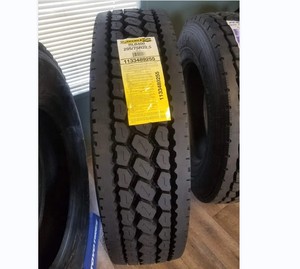






























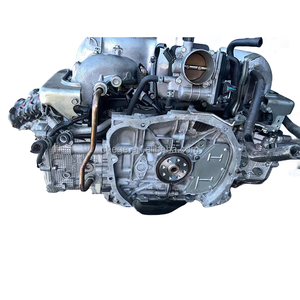






























































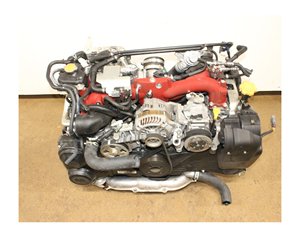


































































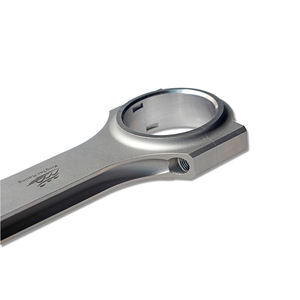
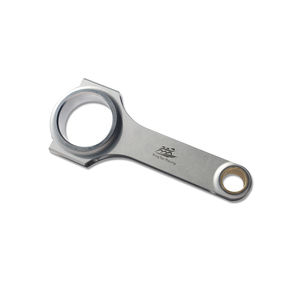
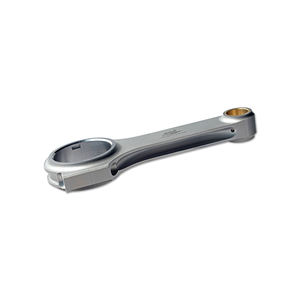
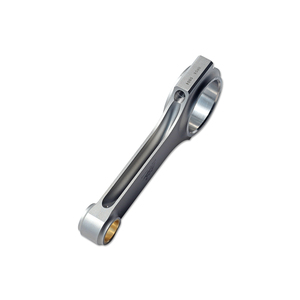
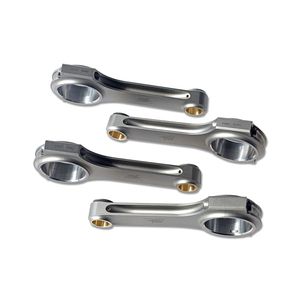
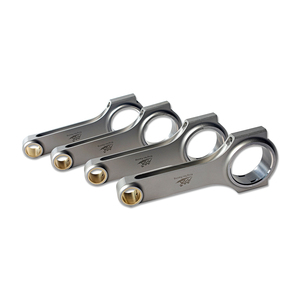

























 浙公网安备 33010002000092号
浙公网安备 33010002000092号 浙B2-20120091-4
浙B2-20120091-4